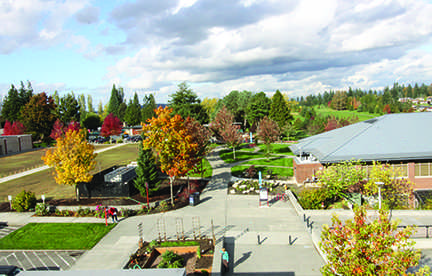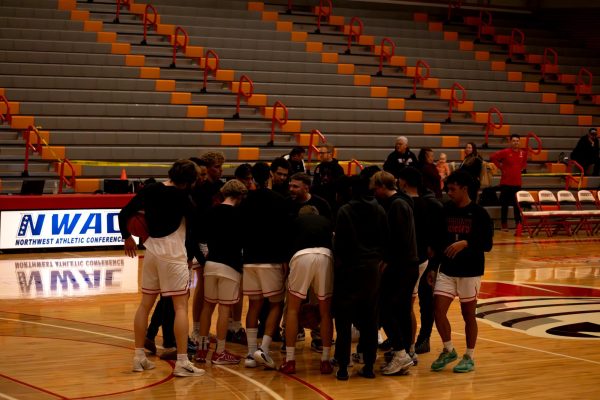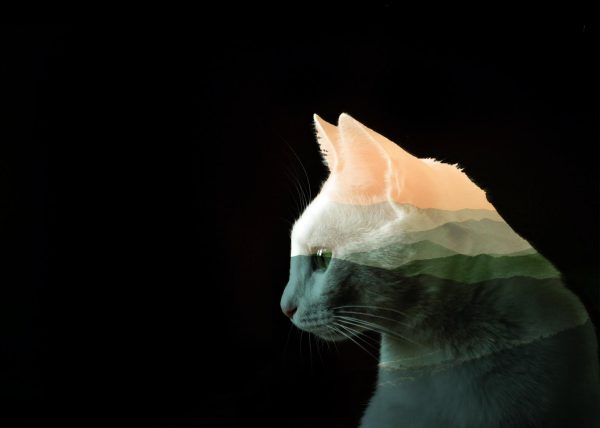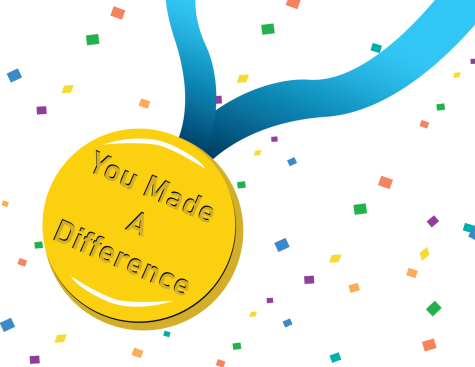The Sustainability Initiative Aims to Turn EvCC Green
Don’t feel bad about printing projects on campus, it’s helping keep EvCC sustainable. All printer paper is 100% recycled and the green window on every computer screen gives students a quota for how much paper they use each quarter. These are projects of EvCC’s sustainability initiative.

Whitehorse Hall seen from the roof of Liberty Hall.
Molly Beeman, EvCC’s resource conservation manger, began the sustainability initiative in 2006. All funding for the initiative comes from grants and other funds applied for by Beeman. There are around 30 projects on campus which include recycling, food waste composting, Christmas tree recycling and a solar project. Washington has 34 community colleges, and Beeman says EvCC has a “more robust program than Universities.”
EvCC makes recycling available to any students, staff or citzens who live in the Everett area. There are many recycling stations across campus that take batteries, print cartridges and compact fluorescent light bulbs. Also, blue bins are located in every building at EvCC where any paper, plastic, aluminum and glass can be recycled.
Another project funded by the initiative is food waste composting which began in 2009. Food waste from the kitchen and the Early Learning Center is compiled and sent to Cedar Grove Composting, located in Everett. Cedar Grove Compost provides soil for the garden located outside of White Horse hall. Vegetables from the garden are used in nutrition classes while unused vegetables are donated to Volunteers of America on Broadway.
If you understand the concept of sustainability, you can apply it anywhere.Additionally, Christmas trees are recycled seasonally at EvCC. Trees are turned into mulch with a wood chipper that cost $13,000. Beeman says that within the first year of using the chipper the school saved $8,000 by not hauling trees away. The mulch is used around campus.
Solar panels on top of Liberty Hall are one more project that was partly funded by the sustainability initiative. Beeman says the primary intent of the solar panels is education and outreach, and saving money is secondary. The panels were not part of Liberty Hall’s initial building specifications and cost $180,000 which is “higher than you would expect,” says Pat Snowden, EvCC’s maintenance mechanic.
There are 80 modules on the roof of Liberty Hall and each module has 240 watts, making this solar project a 19.2 kilowatt array. At the time of installation this was the largest display PUD had provided in Washington State. Each module is tilted at a 35 degree angle, pointing south towards the equator to harvest the summer sun for the dark winter months. The panels are saving energy at EvCC and “helping offset pollution… it’s good all the way around if you ask me,” says Snowden.

Shuksan and the new grass field, site of the formerIndex building, seen from the roof top of Whitehorse Hall.
From the paper in campus printers to the energy saving solar panels on Liberty Hall, “sustainability is in many ways invisible,” says Beeman. Students can begin practicing sustainability by using programs provided by the sustainability initiative on campus. Beeman says, “If you understand the concept of sustainability, you can apply it anywhere.”

How did you get here?
I took Journalism 101 in spring 2014, and realized that I was interested in pursuing it as a career. Andrew became my advisor,...

How did you get here?
I got to the clipper because I love photography and was looking into way s to continue to do it after traveling around the...






